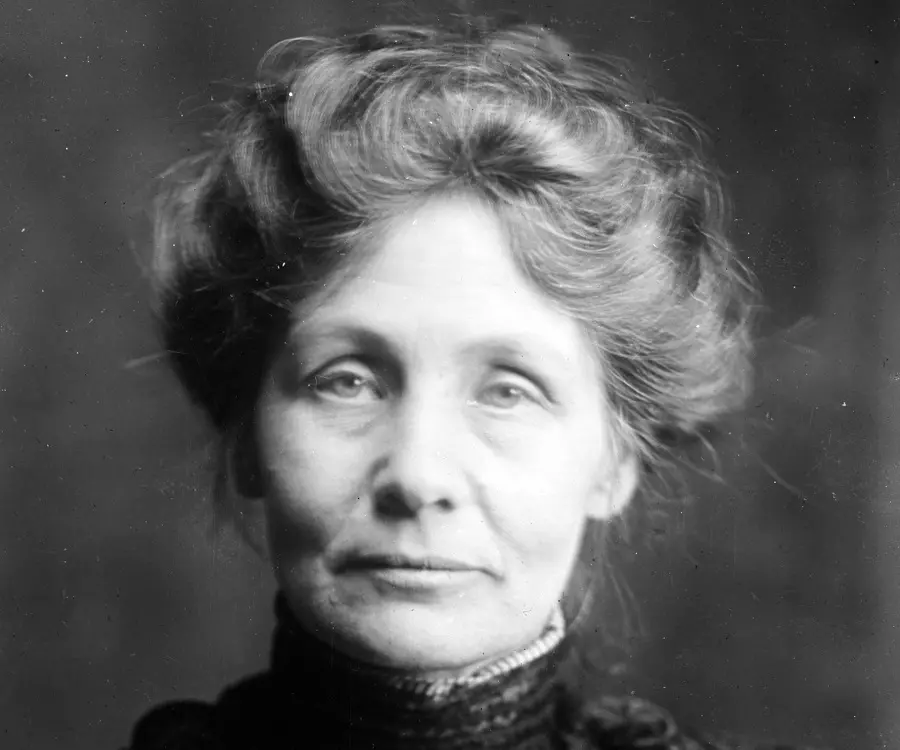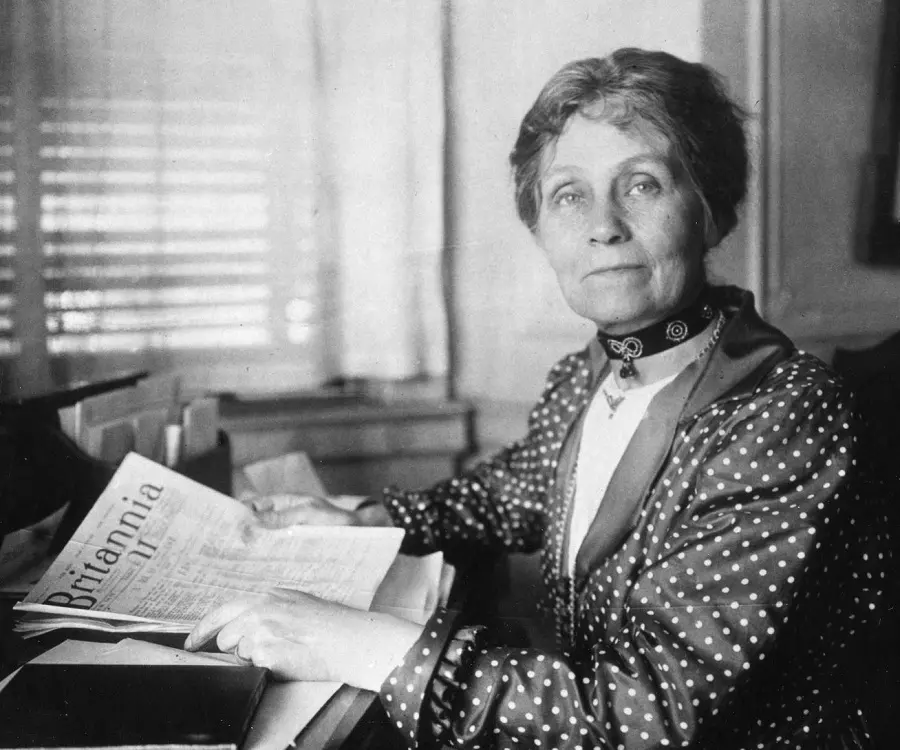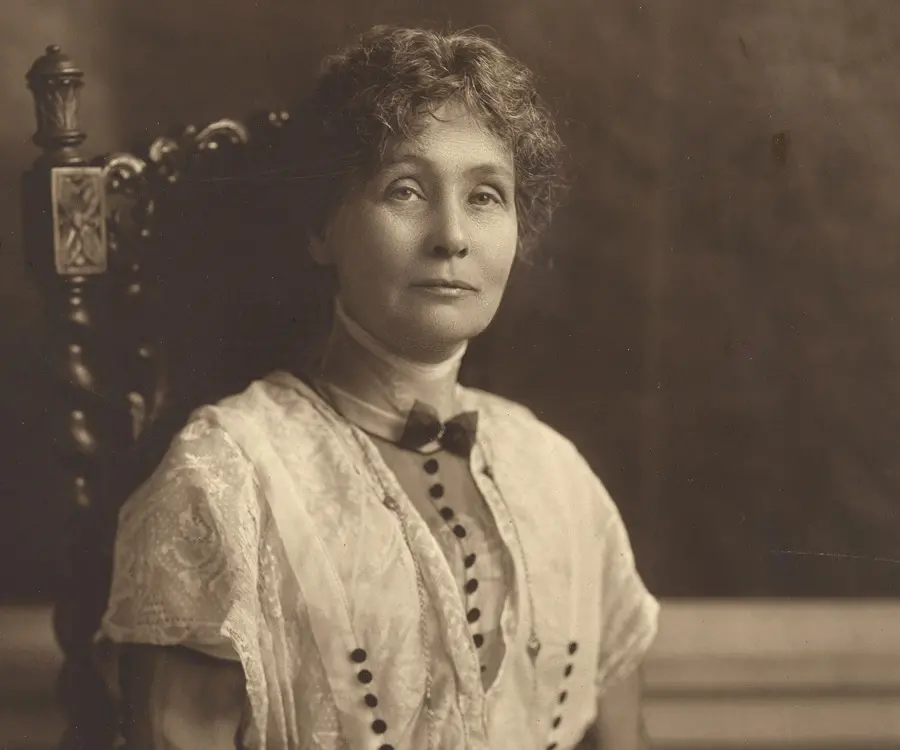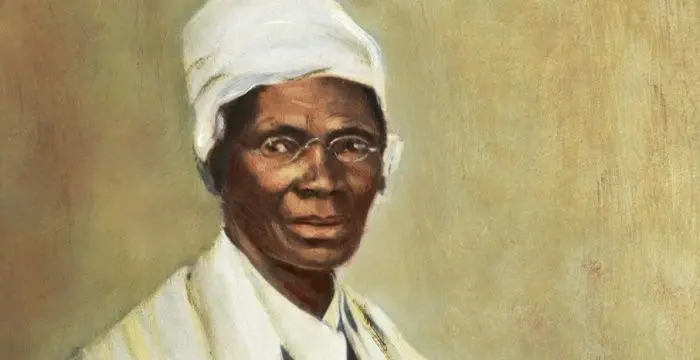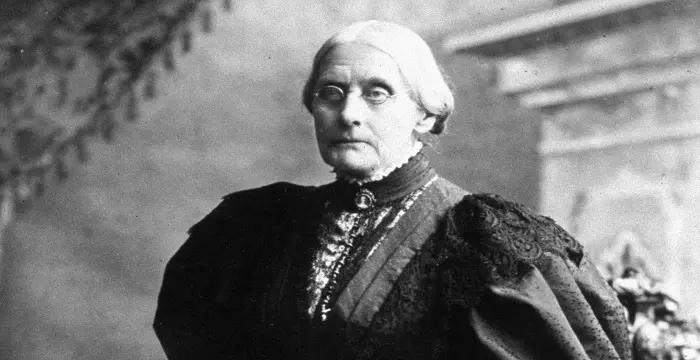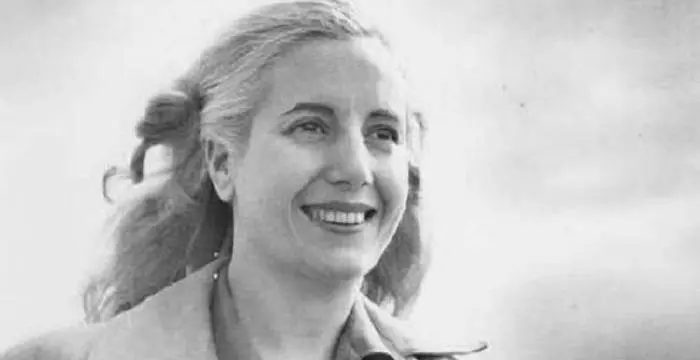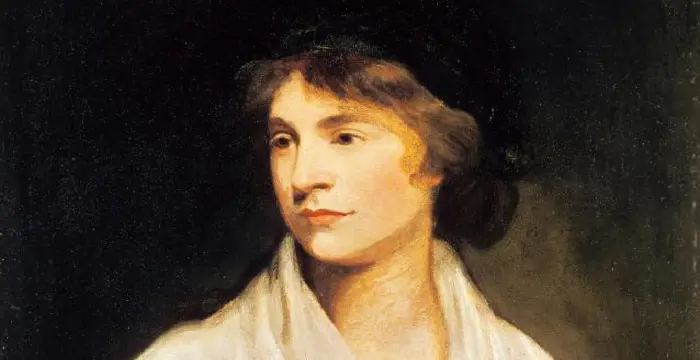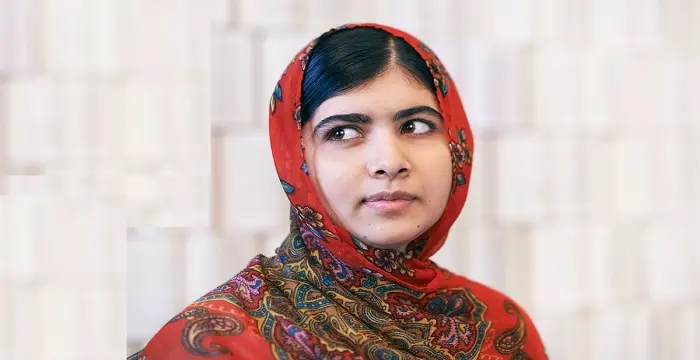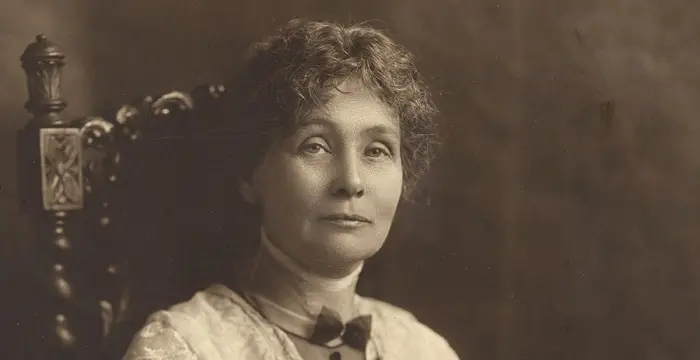
Emmeline Pankhurst - Leader of the British Suffragette Movement, Timeline and Family
Emmeline Pankhurst's Personal Details
Emmeline Pankhurst was a leader of the British suffragette movement
| Information | Detail |
|---|---|
| Birthday | July 4, 1858 |
| Died on | June 14, 1928 |
| Nationality | British |
| Famous | Feminists, Activists, Political Activists, Women's Rights Activists, Leader of the British Suffragette Movement |
| Spouses | Richard Pankhurst (m. 1879–1898) |
| Childrens | Adela Pankhurst, Christabel Pankhurst, Francis Henry Pankhurst, Henry Fransis Pankhurst, Sylvia Pankhurst |
| Universities |
|
| Birth Place | Moss Side, Manchester |
| Political Ideology | Women's Party, Conservative Party |
| Gender | Female |
| Father | Robert Goulden |
| Mother | Sophia Jane Craine |
| Sun Sign | Cancer |
| Born in | Moss Side, Manchester |
| Famous as | Leader of the British Suffragette Movement |
| Died at Age | 69 |
Emmeline Pankhurst's photo
Who is Emmeline Pankhurst?
Emmeline Pankhurst was a British political activist and leader of the British suffragette movement. She was born into a family with a tradition of radical politics and married Richard Pankhurst, a lawyer and a firm believer in the social and political emancipation of women and his ideas did a lot to bolster her belief. She founded the Women's Franchise League, which fought to allow married women to vote in local elections. She helped found the more militant Women's Social and Political Union (WSPU) - an organization that gained much notoriety for its activities and whose members were the first to be christened 'suffragettes’. Her daughters Christabel and Sylvia were both active in the cause. British politicians, press and public were astonished by the demonstrations, window smashing, arson and hunger strikes of the suffragettes. Like many suffragettes, she was arrested on numerous occasions and went on hunger strike herself, resulting in violent force-feeding. This period of militancy was ended abruptly with the outbreak of World War I in 1914. She turned her energies to supporting the war effort. In 1918, the Representation of the People Act gave voting rights to women over 30. She died shortly before women were granted equal voting rights with men.
// Famous Political Activists
Susan Sontag
Susan Sontag is an American critical essayist, cultural analyst, novelist, political activist, filmmaker and playwright of international repute. Read on to find out more about her childhood, career, profile and timeline.
Serj Tankian
Serj Tankian is a famous American singer-songwriter and member of the band, ‘System of a Down’. This biography profiles his childhood, music career, life, achievements and timeline.
Garry Kasparov
Garry Kasparov is a Russian chess Grandmaster considered by many to be the greatest chess player of all time. This biography of Garry Kasparov provides detailed information about his childhood, life, achievements, works & timeline.
Childhood & Early Life
Emmeline was born on 15 July 1858, in Manchester, England, to Robert Goulden, a successful businessman and Sophia Jane Craine, who were politically active folks. She was one of eleven siblings and the eldest amongst her sisters.
An avid reader, she read the Odyssey, The Pilgrim's Progress, Carlyle's The French Revolution: A History, and Stowe’ Uncle Tom's Cabin, and at 15, was admitted to the École Normale de Neuilly in Paris.
Her parents did not give importance to their daughters’ education, expecting them to marry young. Her mother received the Women's Suffrage Journal, and Pankhurst was full of admiration for its editor, Lydia Becker.
Career
She met and began a courtship with Richard Pankhurst, a 44 year old barrister who had supported women's suffrage, freedom of speech and education reform and they wed in 1879.
At her Russell Square home, she hosted a variety of guests including US abolitionist William Lloyd Garrison, Indian MP Dadabhai Naoroji, socialist activists Herbert Burrows and Annie Besant, and French anarchist Louise Michel.
In 1888, when Britain's first nationwide coalition of groups advocating women's right to vote, the National Society for Women's Suffrage (NSWS), split, Pankhurst aligned herself with the group called" Parliament Street Society (PSS).
The PSS was reluctant to advocate on behalf of married women. Pankhurst and her husband helped organize the Women's Franchise League (WFL) dedicated to voting rights for all women – married and unmarried in1889.
The WFL was considered a radical organization, since apart from women's suffrage; it supported equal rights for women in the areas of divorce and inheritance, advocated trade unionism and sought alliances with socialist organizations.
She met Keir Hardie, a socialist from Scotland. He was elected to parliament in and in 1893 helped to create the Independent Labor Party (ILP). She resigned from the WLF and joined the ILP.
She distributed food to poor men and women through the Committee for the Relief of the Unemployed. In 1894, elected Poor Law Guardian in Chorlton-on-Medlock, she was appalled by the conditions in the Manchester workhouse.
Following the death of her husband in 1898, and left with a significant amount of debt, she resigned from the Board of Guardians and became a paid Registrar of Births and Deaths in Chorlton.
In 1900 she was elected to the Manchester School Board.
In 1908, when she tried to enter Parliament to deliver a protest resolution to Prime Minister H. H. Asquith, she was charged with obstruction and sentenced to six weeks in prison.
The exclusive focus of the WSPU on votes for women was the hallmark of its militancy. The WSPU insisted on separating itself from parties which did not make women's suffrage a priority.
She led a protest march of 300 women in 1910 to meet PM Asquith who refused audience. The women marchers were treated brutally by the police. The incident became known as Black Friday.
Hunger strikes, window smashing, protest marches, courting arrests, and imprisonments became order of the day. In 1912, she was arrested, released and rearrested 12 times, serving a total of about 30 days jail
When the First World War broke out, she called off the suffrage campaign and the government released all suffragist prisoners. She established an adoption home at Campden Hill for babies of single mothers.
Pankhurst visited North America in 1916 and the United States and Canada, raising money and urging the US government to support Britain. She visited Russian and met with Alexander Kerensky, the Russian Prime Minister.
The 1918 Representation of the People Act removed property restrictions on men's suffrage and granted the vote to women over the age of 30 and the WSPU reinvented to become the Women's Party.
She joined the Conservative Party and in 1928 ran as a candidate for Parliament but her campaign was pre-empted by her ill- health.
Major Works
Breaking away from the ILP, in 1903, she and several colleagues founded the Women's Social and Political Union (WSPU), open only to women and focused on direct action to win the vote.
The efforts of the WSPU bore fruit when The 1918 Representation of the People Act granted the vote to women over the age of 30 and the WSPU reinvented to become the Women's Party.
Personal Life & Legacy
Emmeline married Richard Pankhurst in 1878 and they had five - Christabel, Estelle Sylvia, Francis Henry, Adela and finally Henry Francis - named after his deceased brother. Richard died in 1898 leaving her in great debt.
Her daughters were active with the WSPU, but differences between her and her daughter Sylvia became apparent with the latter cultivating ties with socialists and becoming an unwed mother for which she was never forgiven.
She died on 14 June 1928 due to illness, at the age of 69.
Sylvia's 1931 book, The Suffrage Movement, criticizes her mother's for betraying the movement while Christabel’s book, Unshackled: The Story of How We Won the Vote, described her as selfless to a fault.
Trivia
This British suffragette declared, “We have to free half of the human race, the women, so that they can help to free the other half”.
The BBC dramatized this suffragette’s life in the mini-series, Shoulder to Shoulder, with Welsh actress Siân Phillips playing her character.
// Famous Activists
Temple Grandin
Temple Grandin is a well-known American writer, autistic activist and animal expert. This biography profiles her childhood, life, achievements, career and timeline
Susan Sontag
Susan Sontag is an American critical essayist, cultural analyst, novelist, political activist, filmmaker and playwright of international repute. Read on to find out more about her childhood, career, profile and timeline.
Serj Tankian
Serj Tankian is a famous American singer-songwriter and member of the band, ‘System of a Down’. This biography profiles his childhood, music career, life, achievements and timeline.
Emmeline Pankhurst biography timelines
- // 15th Jul 1858Emmeline was born on 15 July 1858, in Manchester, England, to Robert Goulden, a successful businessman and Sophia Jane Craine, who were politically active folks. She was one of eleven siblings and the eldest amongst her sisters.
- // 1878 To 1898Emmeline married Richard Pankhurst in 1878 and they had five - Christabel, Estelle Sylvia, Francis Henry, Adela and finally Henry Francis - named after his deceased brother. Richard died in 1898 leaving her in great debt.
- // 1879She met and began a courtship with Richard Pankhurst, a 44 year old barrister who had supported women's suffrage, freedom of speech and education reform and they wed in 1879.
- // 1888In 1888, when Britain's first nationwide coalition of groups advocating women's right to vote, the National Society for Women's Suffrage (NSWS), split, Pankhurst aligned herself with the group called" Parliament Street Society (PSS).
- // 1889The PSS was reluctant to advocate on behalf of married women. Pankhurst and her husband helped organize the Women's Franchise League (WFL) dedicated to voting rights for all women – married and unmarried in1889.
- // 1893She met Keir Hardie, a socialist from Scotland. He was elected to parliament in and in 1893 helped to create the Independent Labor Party (ILP). She resigned from the WLF and joined the ILP.
- // 1894She distributed food to poor men and women through the Committee for the Relief of the Unemployed. In 1894, elected Poor Law Guardian in Chorlton-on-Medlock, she was appalled by the conditions in the Manchester workhouse.
- // 1898Following the death of her husband in 1898, and left with a significant amount of debt, she resigned from the Board of Guardians and became a paid Registrar of Births and Deaths in Chorlton.
- // 1900In 1900 she was elected to the Manchester School Board.
- // 1903Breaking away from the ILP, in 1903, she and several colleagues founded the Women's Social and Political Union (WSPU), open only to women and focused on direct action to win the vote.
- // 1908In 1908, when she tried to enter Parliament to deliver a protest resolution to Prime Minister H. H. Asquith, she was charged with obstruction and sentenced to six weeks in prison.
- // 1910She led a protest march of 300 women in 1910 to meet PM Asquith who refused audience. The women marchers were treated brutally by the police. The incident became known as Black Friday.
- // 1912Hunger strikes, window smashing, protest marches, courting arrests, and imprisonments became order of the day. In 1912, she was arrested, released and rearrested 12 times, serving a total of about 30 days jail
- // 1916Pankhurst visited North America in 1916 and the United States and Canada, raising money and urging the US government to support Britain. She visited Russian and met with Alexander Kerensky, the Russian Prime Minister.
- // 1918The 1918 Representation of the People Act removed property restrictions on men's suffrage and granted the vote to women over the age of 30 and the WSPU reinvented to become the Women's Party.
- // 1918The efforts of the WSPU bore fruit when The 1918 Representation of the People Act granted the vote to women over the age of 30 and the WSPU reinvented to become the Women's Party.
- // 1928She joined the Conservative Party and in 1928 ran as a candidate for Parliament but her campaign was pre-empted by her ill- health.
- // 14th Jun 1928She died on 14 June 1928 due to illness, at the age of 69.
- // 1931Sylvia's 1931 book, The Suffrage Movement, criticizes her mother's for betraying the movement while Christabel’s book, Unshackled: The Story of How We Won the Vote, described her as selfless to a fault.
// Famous Women's Rights Activists
Emily Greene Balch
Emily Greene Balch was an American economist, sociologist and pacifist who won the 1946 Nobel Peace Prize. This biography of Emily Greene Balch provides detailed information about her childhood, life, achievements, works & timeline.
Sojourner Truth
Sojourner truth was an African American abolitionist who was the first black woman to win a case against a white man. This biography provides detailed information about her childhood, life, achievements, works & timeline.
Susan B. Anthony
Susan B. Anthony was an American feminist who played a major role in the women's suffrage movement. This biography of Susan B. Anthony provides detailed information about her childhood, life, achievements, works & timeline
Evita Peron
Radio actress Evita Peron was the second wife of President Juan Peron of Argentina. This biography of Evita Peron provides detailed information about her childhood, life, works, achieements & timeline.
Mary Wollstonecraft
Mary Wollstonecraft was a British writer, philosopher and an advocate of women’s rights. This biography provides detailed information about her childhood, life, works, achievements & timeline.
Malala Yousafzai
Malala Yousafzai is a Pakistani women’s rights activist and the youngest-ever Nobel laureate. This biography of Malala Yousafzai provides detailed information about her childhood, life, achievements, works & timeline.
Emmeline Pankhurst's FAQ
What is Emmeline Pankhurst birthday?
Emmeline Pankhurst was born at 1858-07-04
When was Emmeline Pankhurst died?
Emmeline Pankhurst was died at 1928-06-14
Where was Emmeline Pankhurst died?
Emmeline Pankhurst was died in Hampstead, London
Which age was Emmeline Pankhurst died?
Emmeline Pankhurst was died at age 69
Where is Emmeline Pankhurst's birth place?
Emmeline Pankhurst was born in Moss Side, Manchester
What is Emmeline Pankhurst nationalities?
Emmeline Pankhurst's nationalities is British
Who is Emmeline Pankhurst spouses?
Emmeline Pankhurst's spouses is Richard Pankhurst (m. 1879–1898)
Who is Emmeline Pankhurst childrens?
Emmeline Pankhurst's childrens is Adela Pankhurst, Christabel Pankhurst, Francis Henry Pankhurst, Henry Fransis Pankhurst, Sylvia Pankhurst
What was Emmeline Pankhurst universities?
Emmeline Pankhurst studied at École Normale Supérieure
What is Emmeline Pankhurst's political ideology?
Emmeline Pankhurst's political ideology is Women's Party, Conservative Party
Who is Emmeline Pankhurst's father?
Emmeline Pankhurst's father is Robert Goulden
Who is Emmeline Pankhurst's mother?
Emmeline Pankhurst's mother is Sophia Jane Craine
What is Emmeline Pankhurst's sun sign?
Emmeline Pankhurst is Cancer
How famous is Emmeline Pankhurst?
Emmeline Pankhurst is famouse as Leader of the British Suffragette Movement
